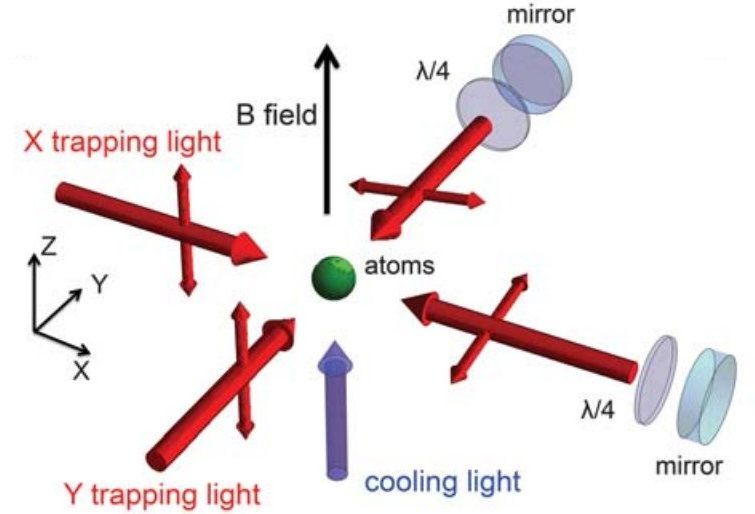The world of an atom is one of random chaos and heat. At room temperatures, a cloud of atoms is a frenzied mess, with atoms zipping past each other and colliding, constantly changing their direction and speed.
Such random motions can be slowed, and even stopped entirely, by drastically cooling the atoms. At a hair above absolute zero, previously frenetic atoms morph into an almost zombie-like state, moving as one wave-like formation, in a quantum form of matter known as a Bose-Einstein condensate.
Since the first Bose-Einstein condensates were successfully produced in 1995 by researchers in Colorado and by Wolfgang Ketterle and colleagues at MIT, scientists have been observing their strange quantum properties in order to gain insight into a number of phenomena, including magnetism and superconductivity. But cooling atoms into condensates is slow and inefficient, and more than 99 percent of the atoms in the original cloud are lost in the process.
